38 understanding sugar content food labels
Changes to the Nutrition Facts Label | FDA - U.S. Food and ... Mar 07, 2022 · Manufacturers with $10 million or more in annual sales were required to update their labels by January 1, 2020; manufacturers with less than $10 million in annual food sales were required to ... Reading labels | Diabetes UK Key points Always look at the 'total carbohydrate' on the label when carb counting. This will make sure you are counting both the complex (starchy) and simple (sugary) carbs in your food. Both will raise your blood glucose (blood sugar) levels, and need to be matched with insulin.
How to Read Nutrition Labels for Sugar - hekagoodfoods Since the average serving consumed is 2/3 cup, the label will change to reflect that. Why Added Sugar is on the New Nutrition Labels Now that you know where to locate the label, let's take a closer look at added sugar nutrition facts. Nutritional information is divided into the following five major categories: Fat Cholesterol Sodium

Understanding sugar content food labels
Learning To Read Labels - Diabetes Education Online On a nutrition food label, subtract the fiber from the total carbohydrate amount. When you read food labels, the grams of sugar are already included in the total carbohydrate amount, so you do not need to count this sugar amount separately. The grams of sugar listed include both natural sugars, from fruit or milk, and added sugars. Decoding Food Labels: Sugar Labeling and What It Means The most up-to-date Nutrition Facts labeling guidelines include information on whether the sugar content of the food you are consuming or purchasing is low or high. Low sugar. 5% daily value (DV) or less is a considered a low source of added sugars. High sugar. 20% DV or more is a high source of added sugars. The daily value is based on a 2,000 ... How to Read Food Labels Without Being Tricked - Healthline Aug 19, 2020 · No added sugar. Some products are naturally high in sugar. The fact that they don’t have added sugar doesn’t mean they’re healthy. Unhealthy sugar substitutes may also have been added. Low ...
Understanding sugar content food labels. Understanding Food Labels | The Nutrition Source | Harvard T ... Plain dairy milk will show 12 grams of Total Sugars (naturally occurring from lactose) per cup but zero Added Sugars. A cup of strawberry yogurt may show 20 grams of Total Sugars of which 10 grams are Added Sugars (10 grams are naturally occurring from lactose and the other 10 grams are from an added sweetener). Added Sugars on the New Nutrition Facts Label | FDA The Dietary Guidelines for Americans recommends limiting calories from added sugars to less than 10 percent of total calories per day. For example, if you consume a 2,000 calorie daily diet, that ... How to Read Food Labels and Understand Sugar Content - yum. Gluten Free Agave, brown rice syrup, brown sugar, cane sugar, caster sugar, coconut nectar, coconut sugar, dextrose, fructose, fruit juice concentrate, glucose, glucose syrup, golden syrup, honey, icing sugar, invert sugar, maple syrup, molasses, panela, rapadura sugar, raw sugar, rice malt syrup, sucrose (They're all types of added sugar!) 'No added sugar' Understanding food labels - Canada.ca Find information on food labels and how to understand them. Learn about nutrition facts tables, serving size, list of ingredients, % daily value and nutrition claims.
Understanding food labels fact sheet - NDSS Understanding how to read food labels can help you choose foods with more fibre and less saturated fat, salt (sodium), added sugars and kilojoules. Food labels will typically include a nutrition information panel, list of ingredients, the 'use by' or 'best before' date and identify potential food allergens and additives. Food labels ... How To Read Food labels for Sugar On the label check the sugars in the nutrition panel. 5g/ml or less of sugar per 100g/ml = this would count as low sugar content. It means 5% of the ingredients are sugar Between 5g/ml and 20g/ml of sugar per 100 grams = medium sugar content. With 20ml of sugar per 100 ml, this means the product is 20% sugar…not so good. How to read and understand a nutrition label - CNET Bold text vs. indented text. Bold text on a nutrition label will give you a top-level overview of the nutritional values, and the indented text beneath that breaks it down further. So "Total Fat ... Food Labels | CDC - Centers for Disease Control and Prevention All the numbers on this label are for a 2/3-cup serving. This package has 8 servings. If you eat the whole thing, you are eating 8 times the amount of calories, carbs, fat, etc., shown on the label. Total Carbohydrate shows you types of carbs in the food, including sugar and fiber. Choose foods with more fiber, vitamins, and minerals.
Understanding food labels - Action on Sugar Checking food labels allows you to compare brands, varieties and flavours of products and choose those that are lower in sugars. Adding up the amount of sugars in the products you eat throughout the day will give you an idea of the amount of sugars you are eating. Foods low in sugars have less than 5.0g /100g Reading Food Labels | ADA - American Diabetes Association The Nutrition Facts labels on foods are really the key to making the best choices. We'll cover the basics so that these labels make shopping easier for you. Get started Understanding Carbs You've heard it all. From carb-free to low-carb, to whole and empty carbs, it's hard to know what it all means. Learn more Food & Blood Sugar Understanding food labels | Diabetes UK The labels show how many calories are in the food or drink and are also colour coded to show whether the food is low (green), medium (amber) or high (red) in fat, saturated fat, sugar and salt. The information on the front of the pack also tells you how the portion of the food contributes to the Reference Intake (RI) of an adult. Food labelling - Making Sense of Sugar light colour overlaid on top of the nutritional information to indicate at a glance whether the food or drink contains a high (red), medium (amber) or low (green) amount of fat, saturates, sugars and salt. For traffic-light labels you will find different limits for total sugars depending on whether the product is a food
Understanding Ingredients on Food Labels | American Heart ... Mar 06, 2017 · There are many terms used for sugar on food labels. You might see sugar listed as the fourth ingredient in a product and think it’s not so bad. But sugar can also be listed as high-fructose corn syrup or corn syrup, agave nectar, barley malt syrup or dehydrated cane juice, to name just a few. Read more about sugar and sweeteners.
How to understand food labels | Eat For Health The Nutrition Information Panel on a food label offers the simplest and easiest way to choose foods with less saturated fat, salt (sodium), added sugars and kilojoules, and more fibre. It can also be used to decide how large one serve of a food group choice or discretionary food would be and whether it's worth the kilojoules.
Understanding Food Nutrition Labels | American Heart Association Learn what to look for on the label. 1 - Start with the serving information at the top. This will tell you the size of a single serving and the total number of servings per container (package). 2 - Next, check total calories per serving and container.
Understanding Ingredients on Food Labels - American Heart … 06.03.2017 · There are many terms used for sugar on food labels. You might see sugar listed as the fourth ingredient in a product and think it’s not so bad. But sugar can also be listed as high-fructose corn syrup or corn syrup, agave nectar, barley malt syrup or dehydrated cane juice, to name just a few. Read more about sugar and sweeteners.
Understanding Food Labels - Nutrition: Science and Everyday Application ... The value printed on the Nutrition Facts panel is the percent DV, which tells you how much one serving of the food contributes towards meeting the daily requirement for that nutrient. The FDA uses the following definitions for interpreting the %DV on food labels:4. 5%DV or less means the food is low in a nutrient.
How to Understand and Use the Nutrition Facts Label | FDA Added Sugars on the Nutrition Facts label include sugars that are added during the processing of foods (such as sucrose or dextrose), foods packaged as sweeteners (such as table sugar), sugars from...
US Consumers' Understanding of Nutrition Labels in 2013: The Importance ... Many consumers check food labels when buying food, either to choose healthy foods or to lose weight (4). Label users also tend to report more healthful dietary practices than nonusers (5). However, mandated nutrition labels have been criticized for being too complex for many consumers to understand and use (4,6).
Understanding sugar content on food labels Understanding sugar content on food labels is important, to ensure that you're consuming healthy amounts. Reading the ingredient lists and nutrition facts tables on packaged foods is a helpful way for you to check what kind, and how much, sugar a product has. Finding sugar content in the ingredients list
What to Know About Sugars on the Nutrition Facts Label The new FDA Nutrition Facts label presents information about sugars in two ways that are different from the original label. First, the amount of sugar found in one serving of a product is now displayed as "Total Sugars." This information was previously displayed on the original label as "Sugars."
Reading food labels: Tips if you have diabetes - Mayo Clinic A sugar-free label means that one serving has less than 0.5 grams of sugar. When you're choosing between standard products and their sugar-free counterparts, compare the food labels. If the sugar-free product has noticeably fewer carbohydrates, the sugar-free product might be the better choice.
Home Page: Journal of Allergy and Clinical Immunology Sep 13, 2022 · An official publication of the American Academy of Allergy, Asthma, and Immunology, The Journal of Allergy and Clinical Immunology brings timely clinical papers, instructive case reports, and detailed examinations of state-of-the-art equipment and techniques to clinical allergists, immunologists, dermatologists, internists, and other physicians concerned with clinical manifestations of ...
Food Labels: Understanding them - Consumer Voice How to read and ... The label breaks down the amount of calories, carbs, fat, fibre, protein, and vitamins per serving of the food, making it easier to compare the nutrition of similar products. Food labels will help you monitor your salt and sugar intakes and make sure that you are eating a healthy diet.
Looking at labels - British Nutrition Foundation ‘Protein’ – this is the total protein content of the food. The body needs protein to grow and repair itself. Most adults in the UK get more than enough protein for their needs. ‘Salt’ - the term ‘salt’ on food labels includes all the sodium in a food. While most sodium comes from salt (sodium chloride), some can be naturally ...
Helping Kids Learn About Food Labels | Sanford Fit Nutrition labels give information. When you are choosing snacks and drinks, look at the sugar line. It will tell you about the natural and added sugars. "Added sugar" is any sugar that was added to the food at some point. Adding sugar to food does not make it more nutritious. Snacks and drinks without added sugars give you a bonus!
Helping Kids Learn About Food Labels | Sanford Fit Nutrition labels give information. When you are choosing snacks and drinks, look at the sugar line. It will tell you about the natural and added sugars. "Added sugar" is any sugar that was added to the food at some point. Adding sugar to food does not make it more nutritious. Snacks and drinks without added sugars give you a bonus!
Food labels - NHS These labels provide information on the number of grams of fat, saturated fat, sugars and salt, and the amount of energy (in kJ and kcal) in a serving or portion of the food. But be aware that the manufacturer's idea of a portion may be different from yours. Some front-of-pack nutrition labels also provide information about reference intakes.
How to Read Food Labels Without Being Tricked - Healthline Aug 19, 2020 · No added sugar. Some products are naturally high in sugar. The fact that they don’t have added sugar doesn’t mean they’re healthy. Unhealthy sugar substitutes may also have been added. Low ...
Decoding Food Labels: Sugar Labeling and What It Means The most up-to-date Nutrition Facts labeling guidelines include information on whether the sugar content of the food you are consuming or purchasing is low or high. Low sugar. 5% daily value (DV) or less is a considered a low source of added sugars. High sugar. 20% DV or more is a high source of added sugars. The daily value is based on a 2,000 ...
Learning To Read Labels - Diabetes Education Online On a nutrition food label, subtract the fiber from the total carbohydrate amount. When you read food labels, the grams of sugar are already included in the total carbohydrate amount, so you do not need to count this sugar amount separately. The grams of sugar listed include both natural sugars, from fruit or milk, and added sugars.
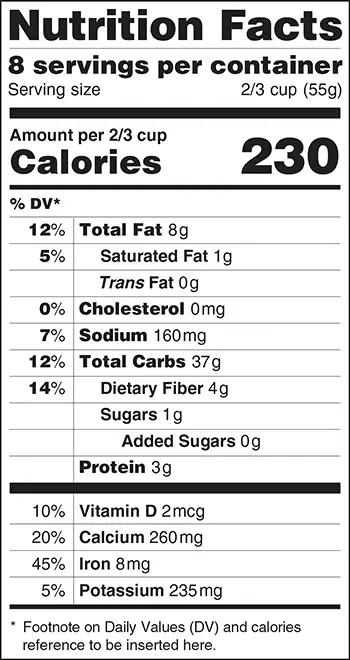







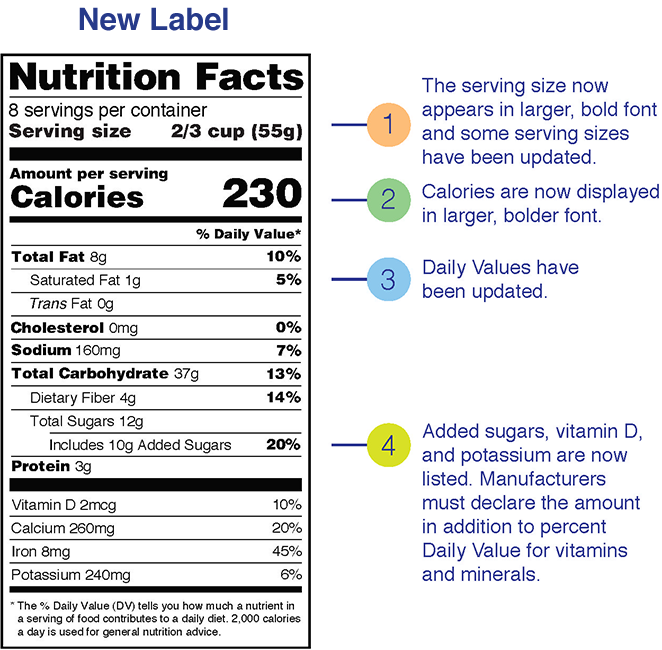


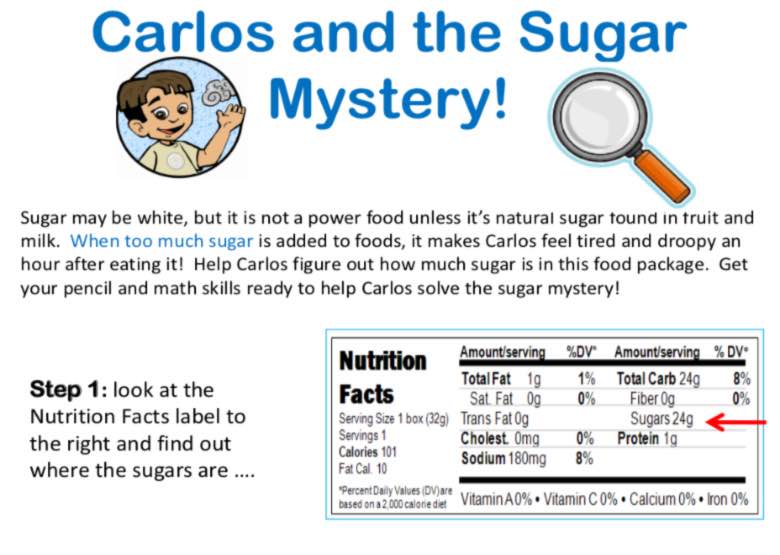









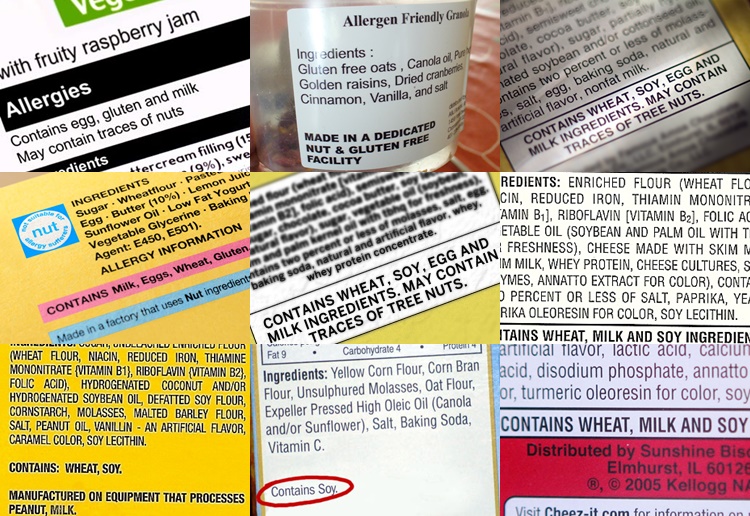

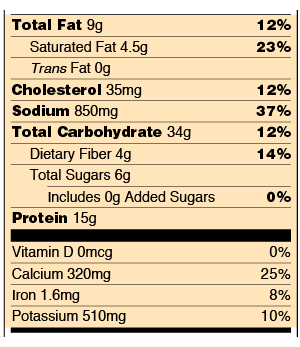



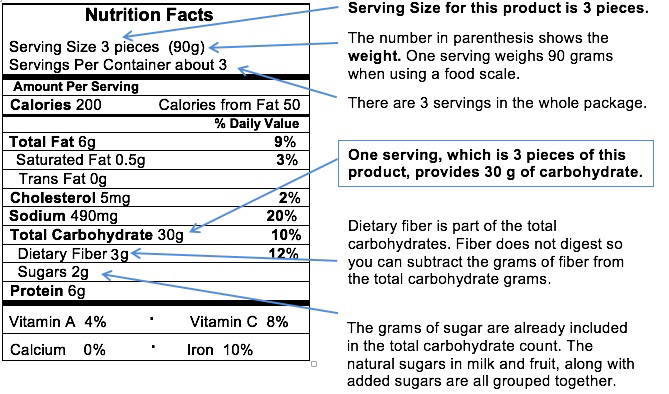




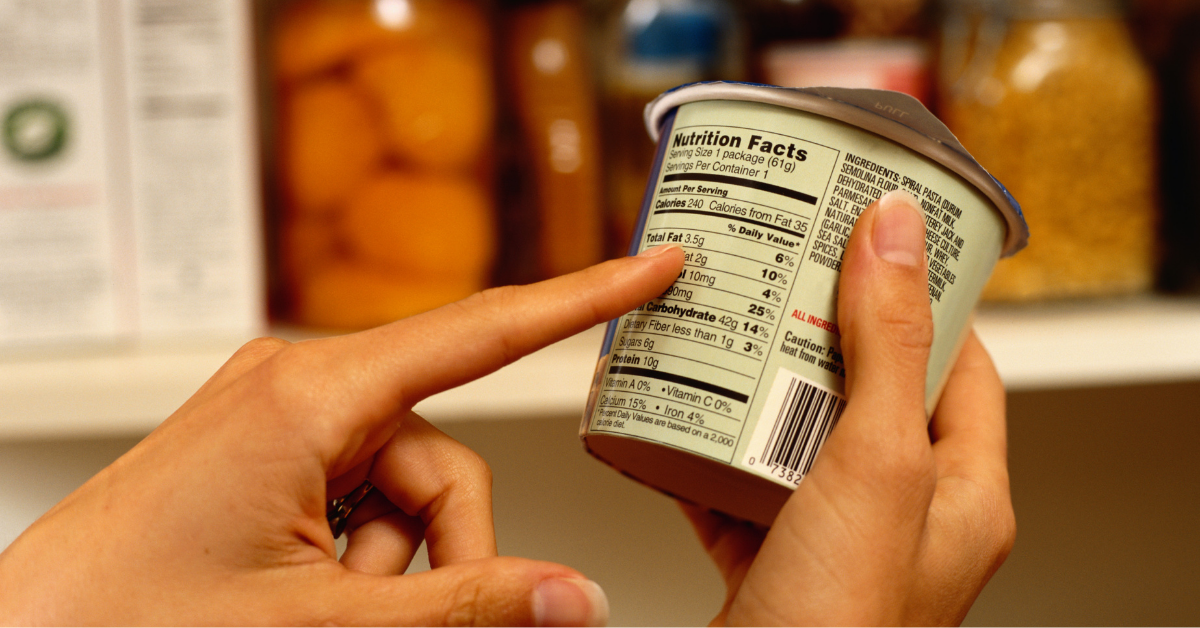




Post a Comment for "38 understanding sugar content food labels"